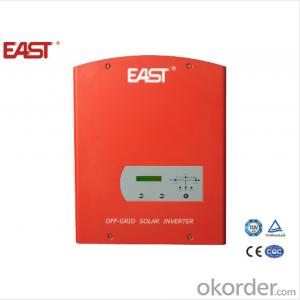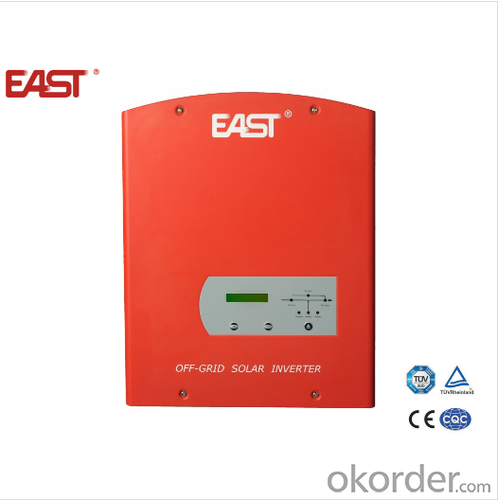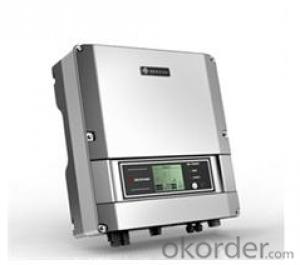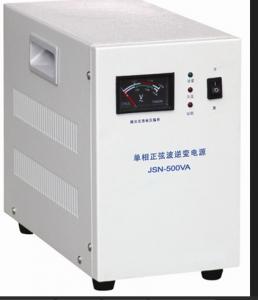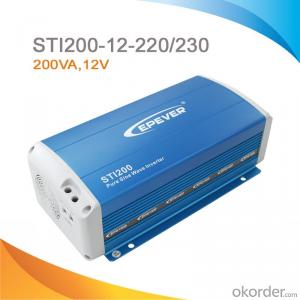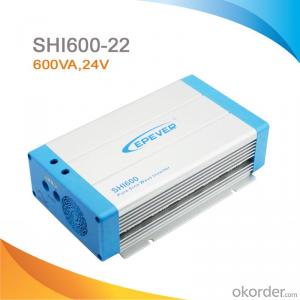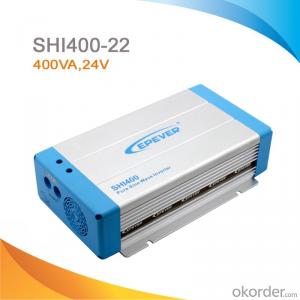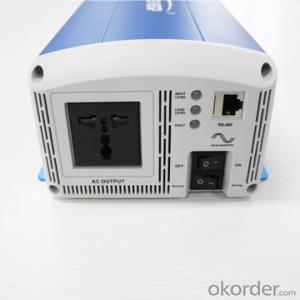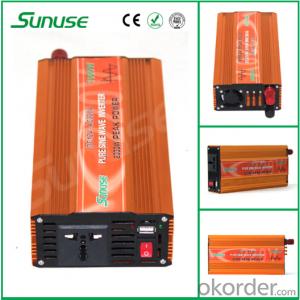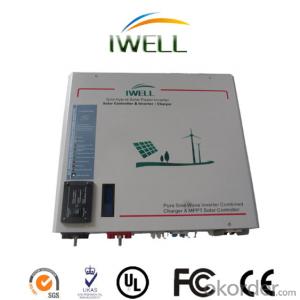Off Grid Solar 12V 220V Pure Sine Wave Inverter 500W to 2400W with MPPT Charge Controller PF 0.8
- Loading Port:
- Qingdao
- Payment Terms:
- TT or LC
- Min Order Qty:
- 50 unit
- Supply Capability:
- 30000 unit/month
OKorder Service Pledge
OKorder Financial Service
You Might Also Like
1. Structure of Off Grid Solar 12v 220v Pure Sine Wave Inverter 500W to 2400W with MPPT Charge Controller PF 0.8
A solar inverter, or PV inverter, or Solar converter, converts the variable direct current (DC) output of a photovoltaic (PV) solar panel into a utility frequency alternating current (AC) that can be fed into a commercial electrical grid or used by a local, off-grid electrical network.
It is a critical BOS–component in a photovoltaic system, allowing the use of ordinary AC-powered equipment.
Solar inverters have special functions adapted for use with photovoltaic arrays, including maximum power point tracking and anti-islanding protection.
2. Main Features of the Off Grid Solar 12v 220v Pure Sine Wave Inverter 500W to 2400W with MPPT Charge Controller PF 0.8
﹒Multi-Setting
﹒High Reliability: Double CPU Digital Control
﹒Isolated and Pure Sine Wave Technique
﹒LCD+LED Display Mode
﹒Wide Input Range
﹒High-Speed Synchronous Conversion
﹒Friendly Alarm System
﹒Online Protection Function
﹒Intelligent No-Load Auto Shutdown Technology
3. Off Grid Solar 12v 220v Pure Sine Wave Inverter 500W to 2400W with MPPT Charge Controller PF 0.8 Images
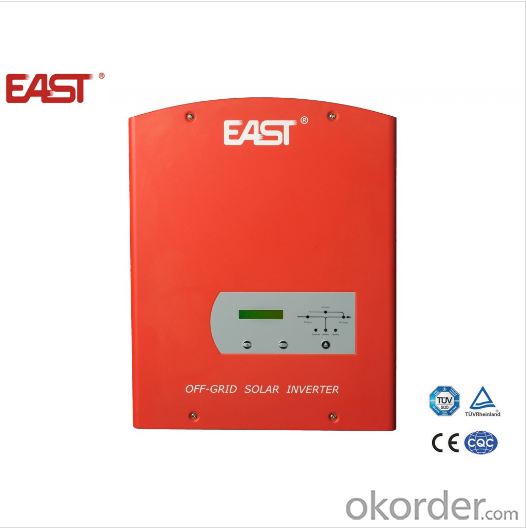
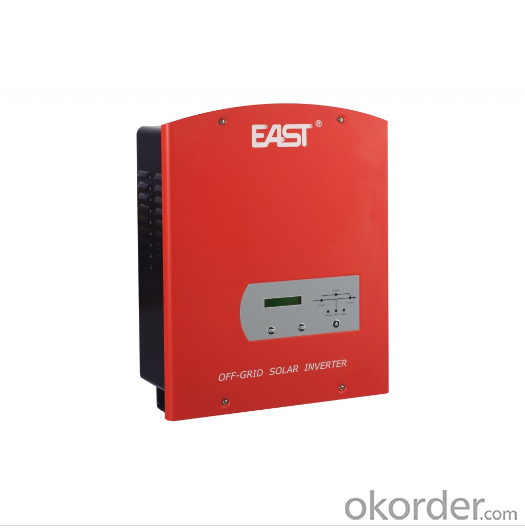
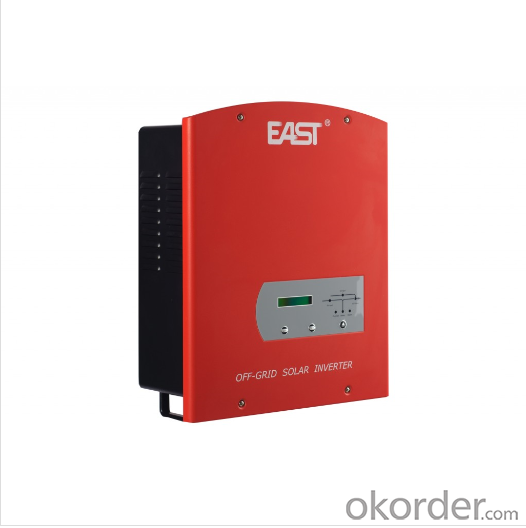
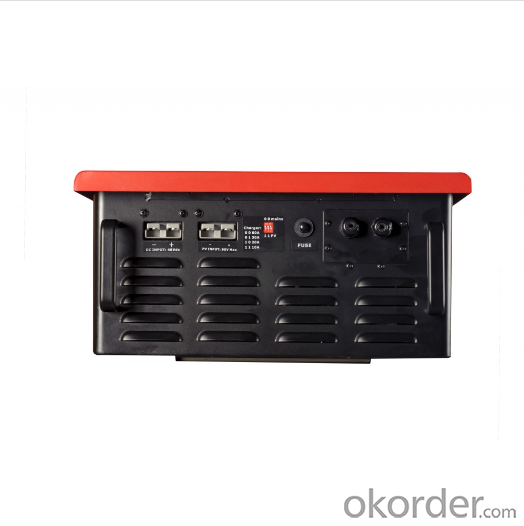
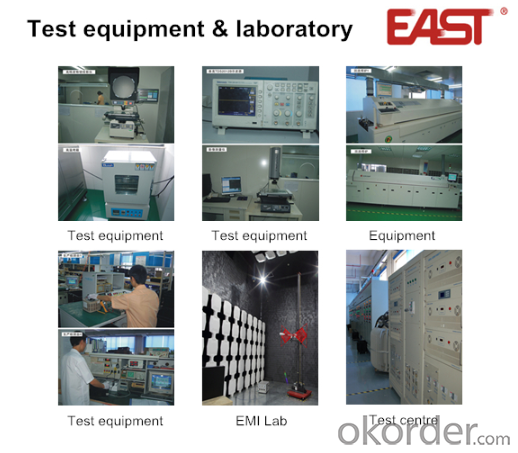
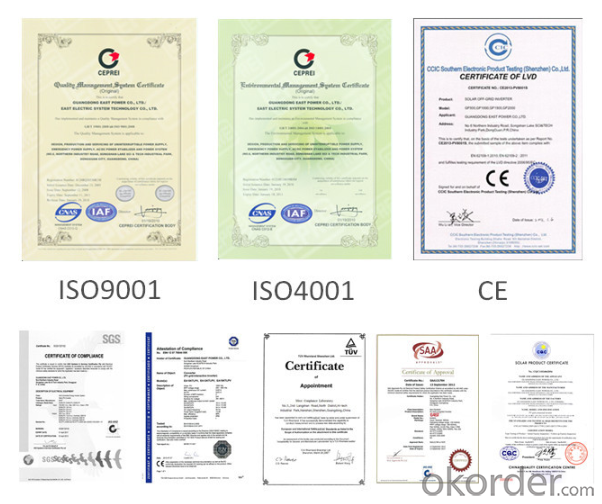
4. Off Grid Solar 12v 220v Pure Sine Wave Inverter 500W to 2400W with MPPT Charge Controller PF 0.8 Specification
Model | GF500 | GF1000 | GF1500 | GF2000 | GF2400 | ||
Capacity | 500VA | 1000VA | 1500VA | 2000VA | 2400VA | ||
Power | 500W | 1000W | 1500W | 2000W | 2400W | ||
Battery voltage/ range | 24Vdc/21-30Vdc | 48Vdc/42-60Vdc | |||||
Working mode | PV(Photovoltaic priority) / AC(AC priority) Optional | ||||||
PV | MPPT voltage range | 24Vdc~ 45Vdc | 48 Vdc ~ 90Vdc | ||||
Max. charge current | 10A/20A/30A/40A (option offered) | 10A/20A/30A/60A | |||||
Conversion efficiency | ≥ 98 % | ||||||
Display | Panel indicator light | LCD + LED display | |||||
Mains status(Optional) | Input voltage range | 100V/110V/120V/220V/230V/240V±25%(Customized) | |||||
Input Frequency range | 45-65 Hz(Automatically transfer to inverter power when overfrequency) | ||||||
Output voltage range | 100V/110V/120V/220V/230V/240V± 10% | ||||||
Input PF.(AC/DC) | 98% | ||||||
charge current | 15Amax(PV Charging current≤Rated 25% battery≤90%) | ||||||
Efficiency | Mains mode≥ 96% | ||||||
Mains overload | 110% 60s transfer to bypass power; 120% transfer to bypass power supply after 30s;automatically recover when decrease load | ||||||
Short circuit | Input fuse | ||||||
Inverter output | Inverter output voltage | 100V/110V/120V/220V/230V/240V± 5% | |||||
Output frequency | 50 Hz / 60Hz ± 1% frequency adaptive | ||||||
Output power factor | 0.8 | ||||||
Wave form distortion | Linear load≤ 5% | ||||||
PV-AC transfer time | 5Ms typical value Max.8 Ms | ||||||
Max.Efficiency | 84.50% | ||||||
Inverter overload | 110% shutdown at 60s,120% shutdown at 5s | ||||||
No-load off | Load< 5% The system automatically shut down at 1MIN, transfer to bypass power supply | ||||||
(Optional) | |||||||
Short circuit | Systems automatically shut down | ||||||
Alarm | Mains abnormal | 1/4S; automatic sound elimination after 40s | |||||
Low battery | 1 / 0.2S | ||||||
Overload | 1 / 1S | ||||||
Communication interface (Optional) | RS232 / USB / SNMP(Setup available for regular start/shutoff) | ||||||
Others | Output sockets | Universal sockets 3PCS / customized | |||||
Surge protection | Optional | ||||||
EMC | EN62040-2:2006;EA61000-3-2:2006; EA61000-3-3:2008 | ||||||
IP class | IP20 | ||||||
Ambient temperature | 0°C ~ 40°C | ||||||
Ambient humidity | 10% ~ 90%(Non Condensed) | ||||||
Noise | ≤ 50dB | ||||||
Dimension | Hanging | 380*195*478 | |||||
D*W*H(mm) | Tower | 420×145×215 | 475×200×337 | ||||
Packing dimension(mm) | Hanging | 455*255*522 | |||||
Tower | 515×236×316 | 592×320×462 | |||||
Weight(kg) | 11 | 13 | 18.8 | 23.7 | 27 | ||
Packing weight(kg) | 11.8 | 13.8 | 20 | 25 | 28.2 | ||
5. FAQ of Off Grid Solar 12v 220v Pure Sine Wave Inverter 500W to 2400W with MPPT Charge Controller PF 0.8
Q1. What is the difference between inverter and solar inverter?
A1. Inverter only has AC inpput, but solar inverter both connect to AC input and solar panel, it saves more power.
Q2. What is the difference between MPPT&PWM?
A2. MPPT has higher efficiency, it can track the max power point and won't waste energy.
Q3. What is the waranty of product?
A3. 12 months.
- Q: How do you calculate the efficiency loss due to temperature for a solar inverter?
- To calculate the efficiency loss due to temperature for a solar inverter, you need to determine the temperature coefficient of the inverter. This coefficient represents the rate at which the inverter's efficiency decreases with an increase in temperature. Once you have the temperature coefficient, you can calculate the efficiency loss by multiplying it with the difference between the actual operating temperature and the reference temperature. The reference temperature is typically the standard test condition temperature, which is usually around 25 degrees Celsius. The formula to calculate the efficiency loss is as follows: Efficiency Loss = Temperature Coefficient × (Operating Temperature - Reference Temperature) By plugging in the appropriate values, you can determine the efficiency loss due to temperature for a solar inverter.
- Q: Are there any government regulations or certifications for solar inverters?
- Yes, there are government regulations and certifications for solar inverters. In many countries, solar inverters must comply with specific standards and regulations set by government bodies. Additionally, various certifications such as International Electrotechnical Commission (IEC) standards, UL listing, and CE marking are commonly required to ensure the safety, performance, and interoperability of solar inverters.
- Q: Can a solar inverter be used for both single-phase and three-phase applications?
- No, a solar inverter cannot be used for both single-phase and three-phase applications. The type of inverter required depends on the specific electrical requirements of the system. Single-phase inverters are designed for single-phase applications, while three-phase inverters are specifically designed for three-phase applications.
- Q: Can a solar inverter be used with a string inverter system?
- No, a solar inverter and a string inverter system are two different types of inverters used in solar power systems. They cannot be used interchangeably as they have different functionalities and are designed for different types of solar installations.
- Q: How does the input voltage rating affect the performance of a solar inverter?
- The input voltage rating of a solar inverter directly affects its performance as it determines the maximum voltage that the inverter can handle from the solar panels. If the input voltage exceeds the rating, it can lead to overloading or damage to the inverter. On the other hand, if the input voltage falls below the rating, it can result in reduced efficiency and power output. Therefore, selecting an inverter with an appropriate input voltage rating is crucial to ensure optimal performance and longevity of the solar system.
- Q: What is the role of a solar inverter in a residential system?
- The role of a solar inverter in a residential system is to convert the direct current (DC) electricity produced by the solar panels into alternating current (AC) electricity that can be used to power household appliances and be fed into the electrical grid. It ensures efficient use of solar energy and enables easy integration of solar power into the existing electrical infrastructure of a home.
- Q: What is the maximum AC output power of a solar inverter?
- The maximum AC output power of a solar inverter depends on its specifications and capacity. It can range from a few hundred watts for small residential inverters to several megawatts for large-scale commercial or utility-grade inverters.
- Q: What is the role of MPPT (Maximum Power Point Tracking) in a solar inverter?
- The role of MPPT (Maximum Power Point Tracking) in a solar inverter is to optimize the power output from a solar panel by continuously tracking and adjusting the operating point to ensure it operates at the maximum power point. This is crucial because the power output of a solar panel is affected by various factors such as temperature and shading, and without MPPT, the inverter would not be able to extract the maximum power from the panel, leading to reduced efficiency and output. MPPT algorithms monitor the voltage and current of the solar panel and adjust the load to match the optimal operating voltage, maximizing the power output and overall system performance.
- Q: How does a solar inverter interact with the electrical grid?
- A solar inverter interacts with the electrical grid by converting the direct current (DC) electricity generated by solar panels into alternating current (AC) electricity that is compatible with the grid. It synchronizes the generated electricity with the grid's voltage and frequency, allowing excess power to be fed back into the grid for others to use, and drawing additional power from the grid when needed. This interaction ensures efficient utilization of solar energy and seamless integration of solar power into the existing electrical grid infrastructure.
- Q: Can a solar inverter be used with a portable solar panel system?
- Yes, a solar inverter can be used with a portable solar panel system. The solar inverter is responsible for converting the direct current (DC) energy produced by the solar panels into alternating current (AC) that can be used to power electronic devices. A portable solar panel system typically includes a solar panel, a charge controller, and a battery, and the solar inverter can be connected to this system to convert the DC energy stored in the battery into AC energy for powering appliances or charging electronic devices.
Send your message to us
Off Grid Solar 12V 220V Pure Sine Wave Inverter 500W to 2400W with MPPT Charge Controller PF 0.8
- Loading Port:
- Qingdao
- Payment Terms:
- TT or LC
- Min Order Qty:
- 50 unit
- Supply Capability:
- 30000 unit/month
OKorder Service Pledge
OKorder Financial Service
Similar products
Hot products
Hot Searches
Related keywords
